A new exhibition celebrates the global sweep of Kenya-born British artist Magdalene Odundo
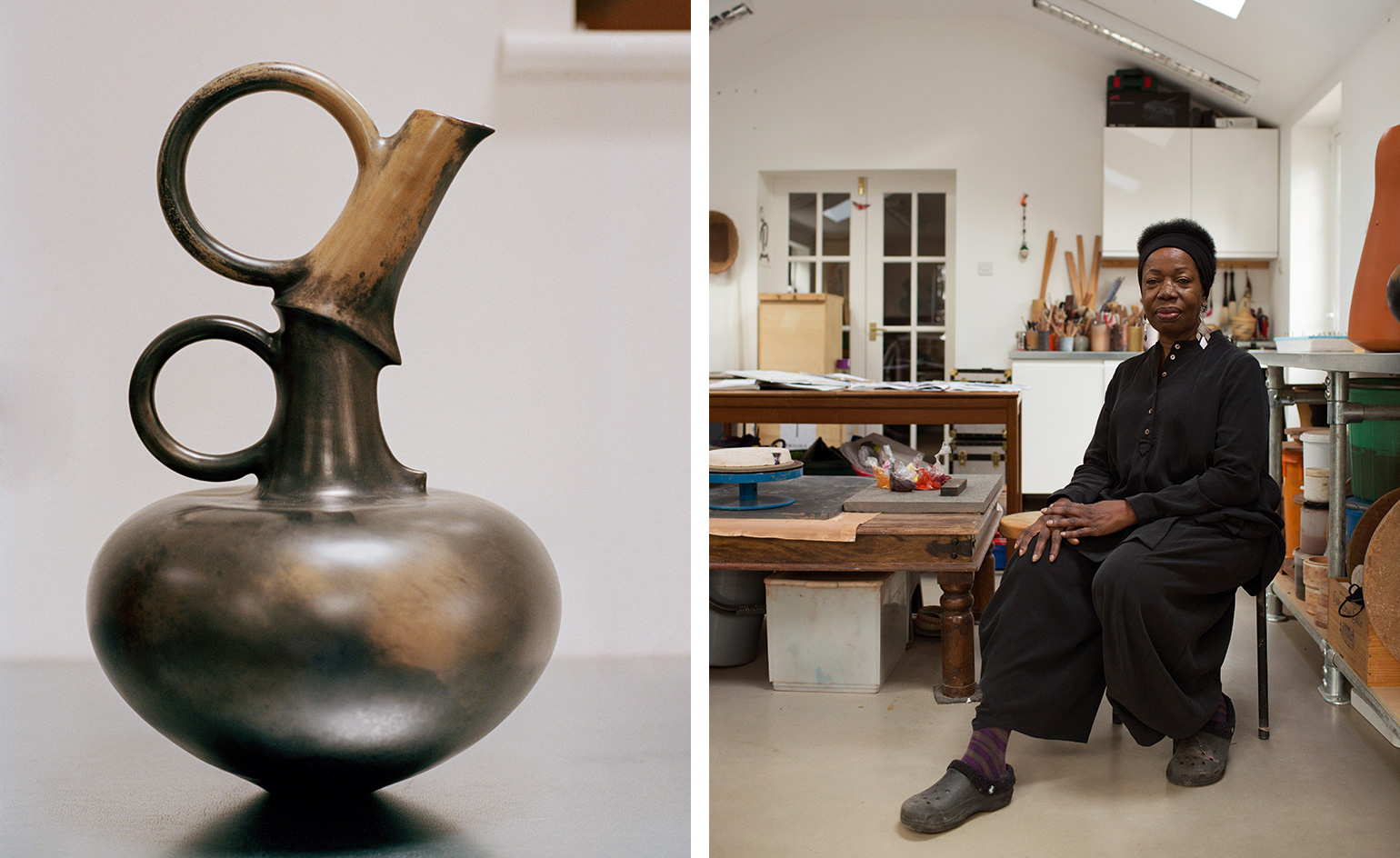
Sophie Green - Photography
Artist Magdalene Odundo is standing in her studio in Surrey, alongside architect Farshid Moussavi and Hepworth Wakefield chief curator Andrew Bonacina. In front of them lie images of Henry Moore sculptures, alabaster jars from Ancient Egypt, a 19th-century Ghanaian ritual doll and a Cycladic figure dating back to 2700 BC. The trio are discussing how these wide-ranging historical, cultural and technical references have influenced Odundo and, more pressingly, how to process this ahead of the biggest ever display of her work. On 16 February, ‘The Journey of Things’ will open at Hepworth Wakefield, pitching over 50 of Odundo’s sculptures alongside a panoply of contextual items from art, archaeology and fashion. The show aims to shed light on Odundo’s unique practice. It’s a retrospective in name, but in reality is a much broader take on numerous histories of art.
‘Space and place have always been very interesting to me,’ explains Odundo. Born in Kenya in 1950, she first moved to the UK aged 21 to attend the Cambridge School of Art, where she began to specialise in ceramic. A wanderlust and thirst for creative inspiration and technical knowledge saw the young Odundo travel to Nigeria, New Mexico and China, where in each case she absorbed elements of vernacular craftsmanship, which all fed into her visual language and found new form in her large-scale vessels. ‘I am a product of travel, and when you travel you gather a lot of information,’ she reflects.
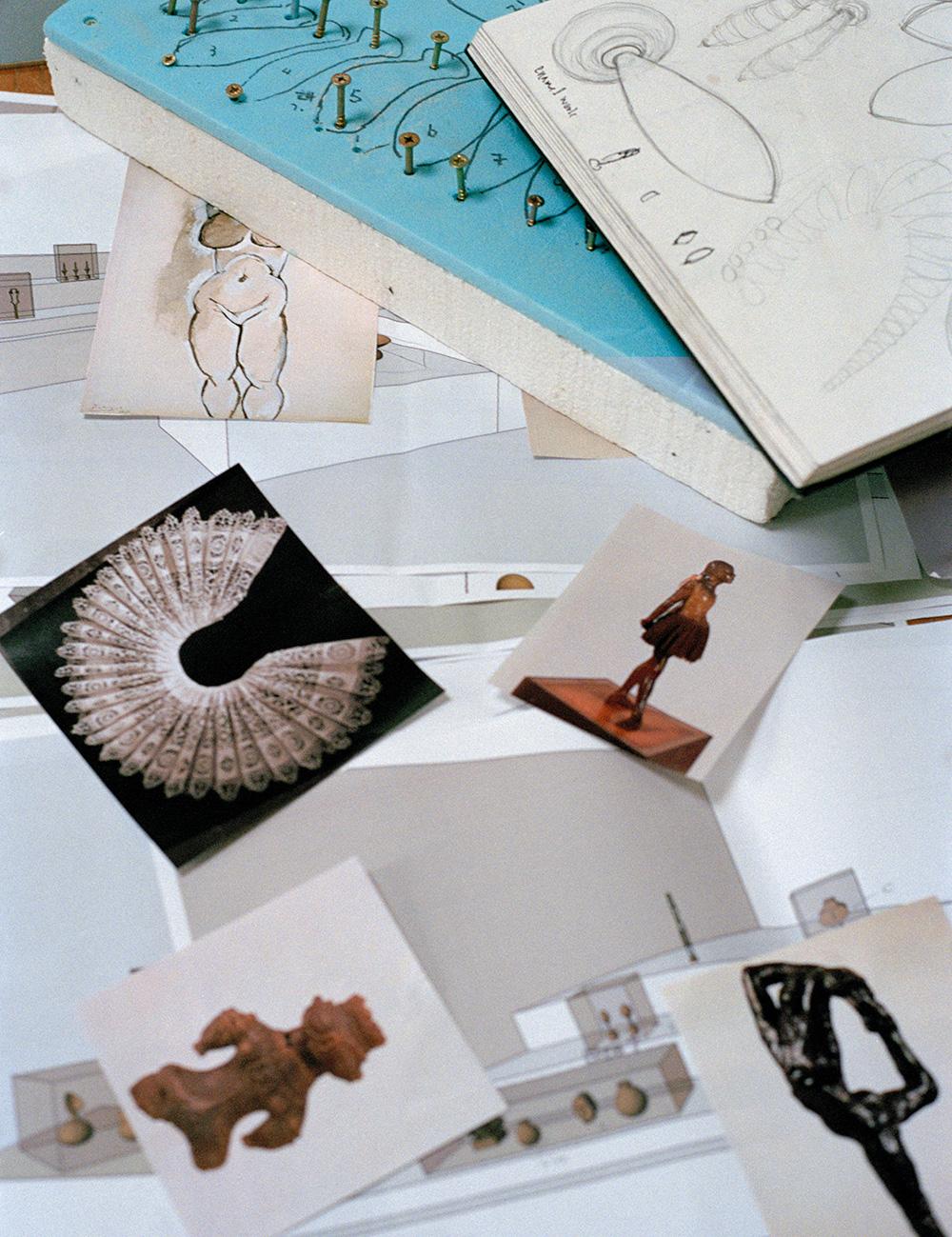
Research for the show, which will include Odundo’s inpirations, from an Elizabethan ruff to Edgar Degas’ dancers.
The exhibition at Hepworth Wakefield aims to lay these influences bare. It follows the museum’s 2017 exhibition, ‘Disobedient Bodies’ (W*216), which saw Jonathan Anderson display fashion alongside pieces by Jean Arp, Sarah Lucas and Lynn Chadwick. ‘As a new museum with a collection, we have the opportunity to tell new stories. We can experiment more and tell alternative histories with it,’ says Bonacina. With this in mind, featuring the work and influences of Odundo made perfect sense. ‘With Magdalene, I feel that the references are overwhelmingly important as they are so trans-historical and global in their reach,’ continues Bonacina. ‘To be able to look at that development over almost 40 years felt like such an opportunity.’
‘I am a product of travel, and when you travel you gather a lot of information’
Putting together the show has taken much research, with Bonacina poring over almost every lecture Odundo has given (she has taught at Loughborough University and London’s Goldsmiths, is chancellor and professor at the University of the Creative Arts in Farnham, and has lectured elsewhere in Europe and in the US) and reading every text to create a long list of objects that have influenced her work. These span from a 1900 BC Cypriot cup once owned by Barbara Hepworth and Edgar Degas’ ballerina drawings to, perhaps less obviously, an Elizabethan ruff. ‘That came up when I was working at the Commonwealth Institute and I took the kids to a museum,’ recalls Odundo. ‘They were trying on the clothes and I realised how much of ceramics was based on the human form.’
‘We’re telling a personal story and a very subjective history here. It’s not an academic history of ceramics or even of global object-making,’ says Bonacina. Instead, visual and applied art are used as props to tell the biography of one woman. As an example, Bonacina mentions a sculpture called Bird Swallowing a Fish by French artist Henri Gaudier-Brzeska that Odundo first saw when she moved to the UK. ‘Magdalene thought it was by an African artist,’ he says. ‘She was moving in the opposite direction to most modernist artists who were looking to Africa. She was an African artist coming to Europe and then looking back to Africa.’
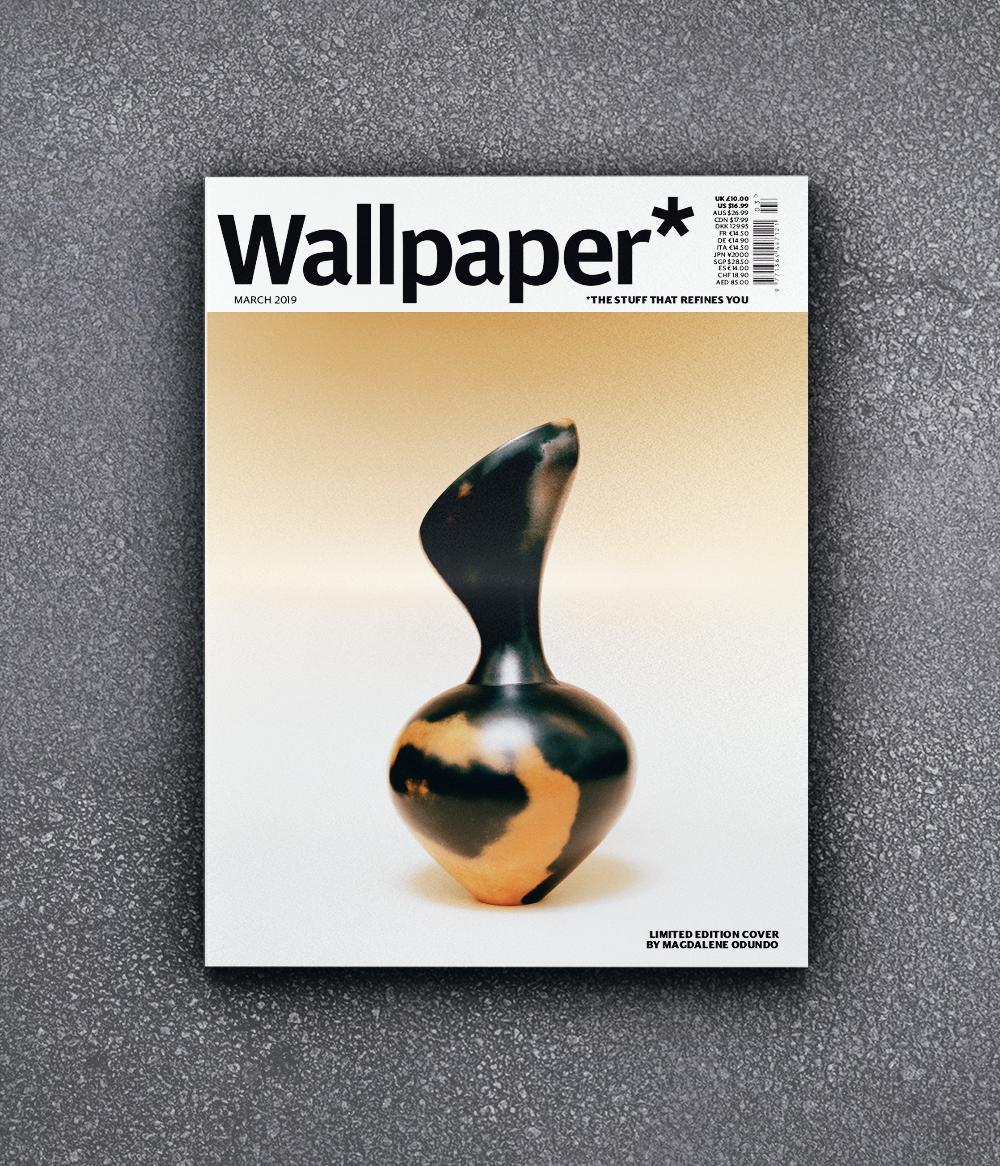
Ceramic artist Magdalene Odundo’s limited edition cover for the March 2019 issue of Wallpaper* features a new asymmetric Betu series work, 2016-2018. Courtesy of the artist and Anthony Slayter-Ralph.
‘It must be such a dream to have someone like Andrew take this broad view of your work and put it into context,’ says Moussavi, who was brought on board to design the show. Working alongside Odundo and Bonacina, Moussavi and her team first played around with the idea of displaying things based on technique or scale, before deciding to create a less dogmatic ‘terrain’ running through the gallery space. ‘It’s truer to Magdalene’s journey,’ says Moussavi. Works are grouped together to create inspirational ‘backdrops’, ‘but there are always overlaps’, explains Moussavi, who wanted to show the borderless nature of Odundo’s portfolio. ‘This is an example of how we can learn from each other; travel and looking at pieces and people other than ourselves can be hugely inspiring.’
At the centre of each section will sit works by Odundo, plucked evenly from throughout her four-decade career. Pulling many of these works out of museums and placing them together has made an impact on Odundo. ‘It’s been surprising to see where I started and where I’ve got to,’ she says. ‘And realising what a long journey I have still to make.
As originally featured in the March 2019 issue of Wallpaper* (W*240)
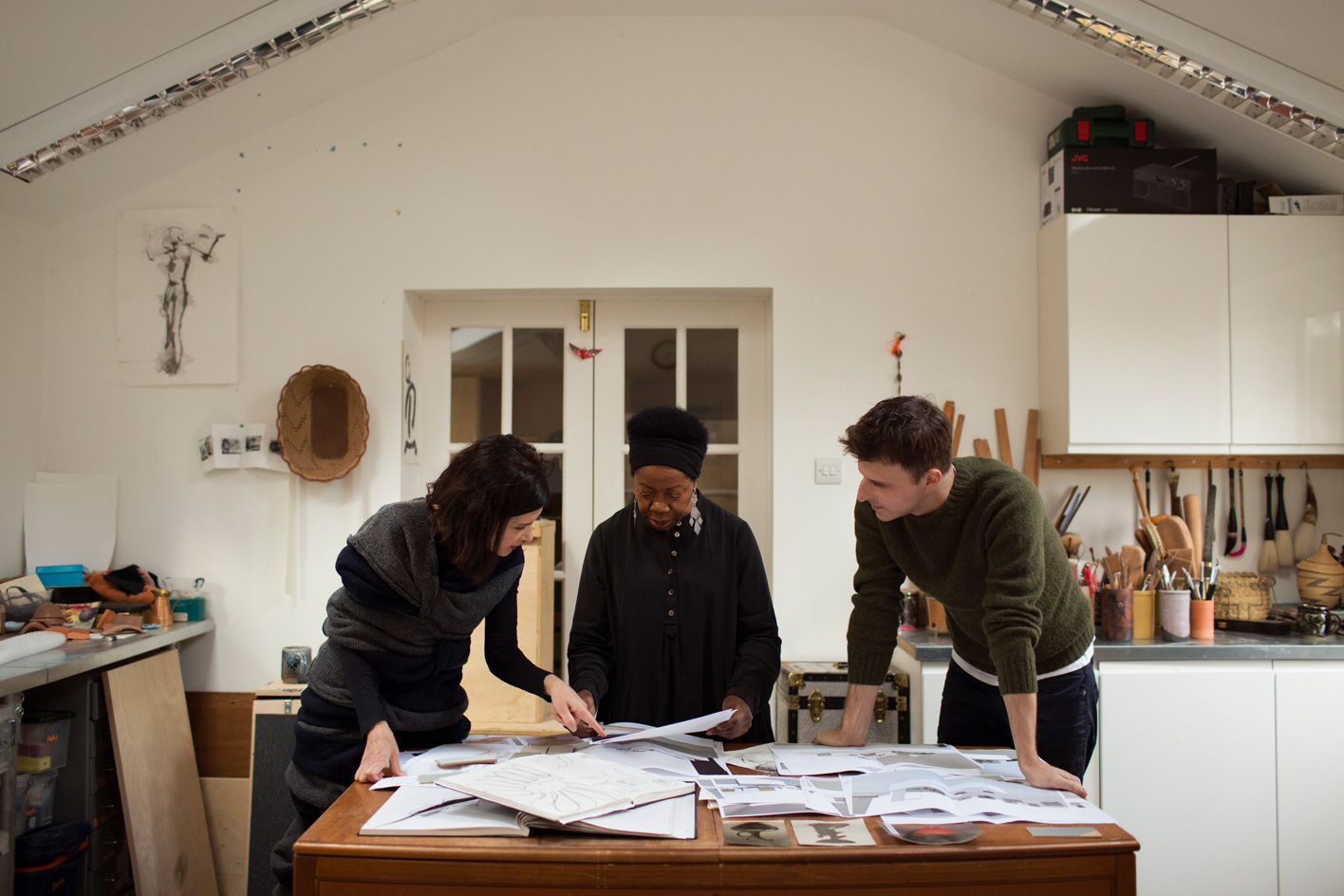
Farshid Moussavi, Odundo and Andrew Bonacina preparing the Hepworth Wakefield show.
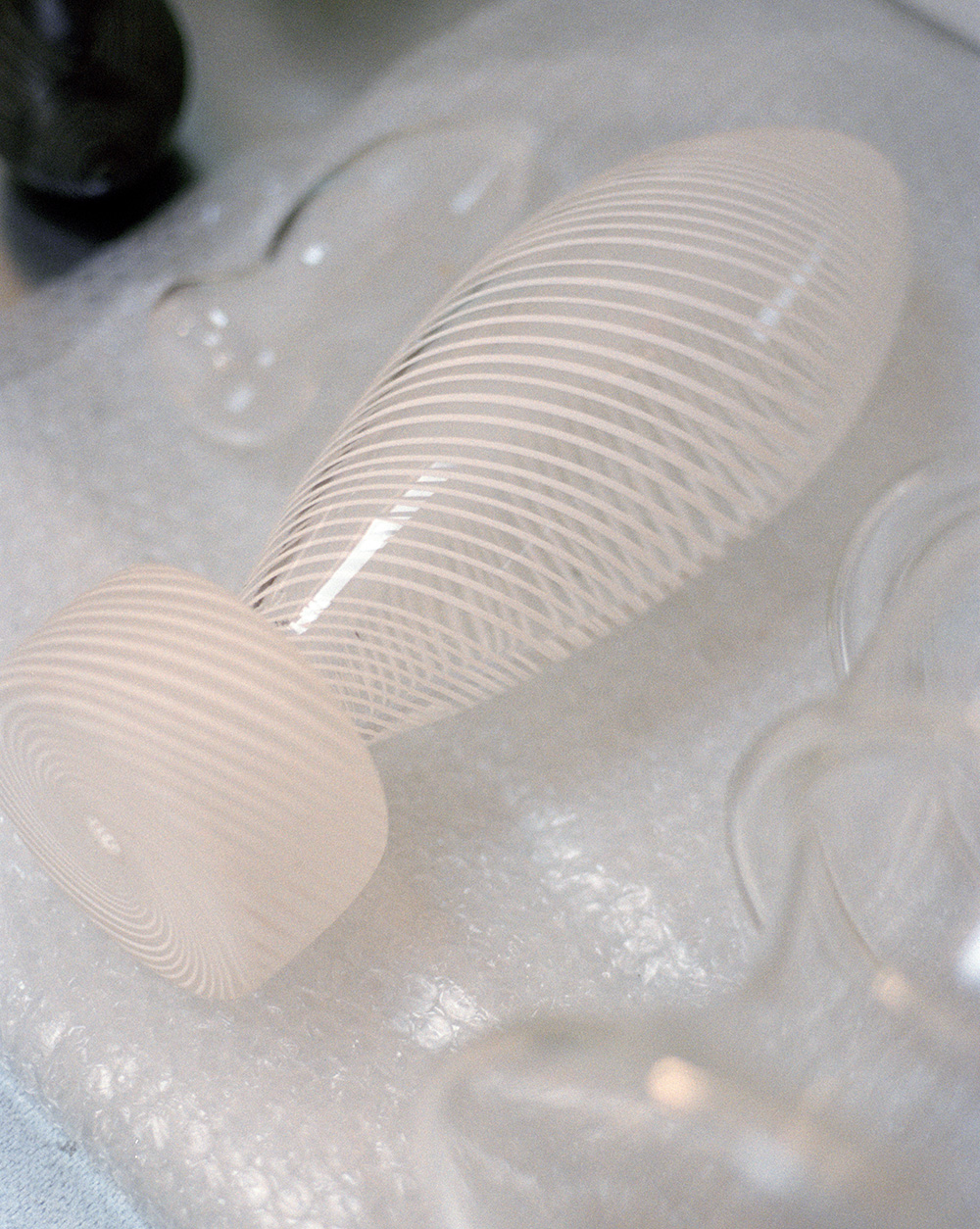
Metamorphosis and Transformation, 2011, hot blown glass, by Magdalene Odundo.
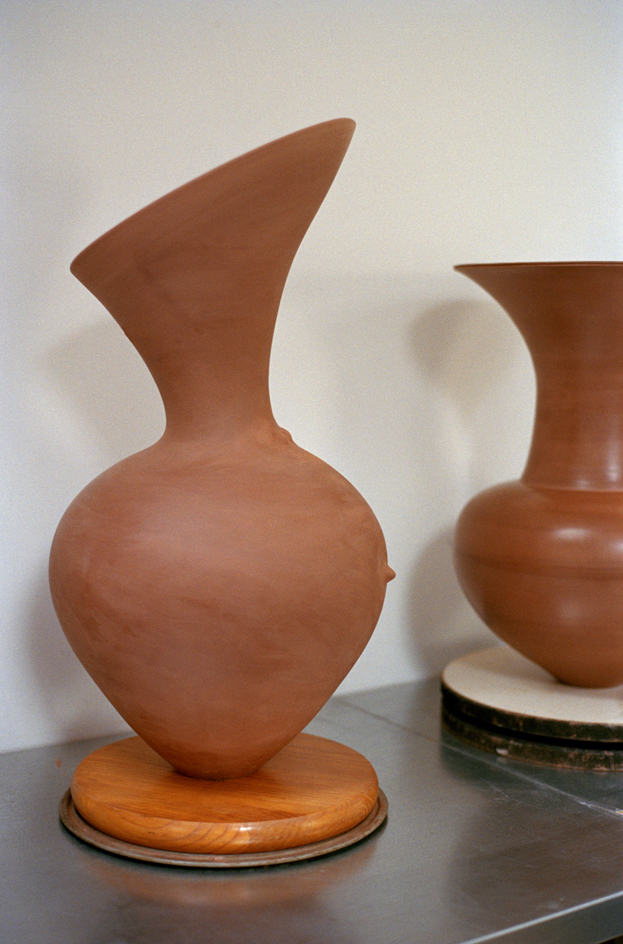
Work in progress in the studio.
INFORMATION
‘Magdalene Odundo: The Journey of Things’ is on view from 16 February – 2 June at Hepworth Wakefield and 3 August – 15 December at Sainsbury Centre for Visual Arts, Norwich. For more information, visit Magdalene Odundo’s website, the Hepworth Wakefield website and the Sainsbury Centre for Visual Arts website
Wallpaper* Newsletter
Receive our daily digest of inspiration, escapism and design stories from around the world direct to your inbox.
- Sophie Green - PhotographyPhotography
-
 Put these emerging artists on your radar
Put these emerging artists on your radarThis crop of six new talents is poised to shake up the art world. Get to know them now
By Tianna Williams
-
 Dining at Pyrá feels like a Mediterranean kiss on both cheeks
Dining at Pyrá feels like a Mediterranean kiss on both cheeksDesigned by House of Dré, this Lonsdale Road addition dishes up an enticing fusion of Greek and Spanish cooking
By Sofia de la Cruz
-
 Creased, crumpled: S/S 2025 menswear is about clothes that have ‘lived a life’
Creased, crumpled: S/S 2025 menswear is about clothes that have ‘lived a life’The S/S 2025 menswear collections see designers embrace the creased and the crumpled, conjuring a mood of laidback languor that ran through the season – captured here by photographer Steve Harnacke and stylist Nicola Neri for Wallpaper*
By Jack Moss
-
 The art of the textile label: how British mill-made cloth sold itself to Indian buyers
The art of the textile label: how British mill-made cloth sold itself to Indian buyersAn exhibition of Indo-British textile labels at the Museum of Art & Photography (MAP) in Bengaluru is a journey through colonial desire and the design of mass persuasion
By Aastha D
-
 From counter-culture to Northern Soul, these photos chart an intimate history of working-class Britain
From counter-culture to Northern Soul, these photos chart an intimate history of working-class Britain‘After the End of History: British Working Class Photography 1989 – 2024’ is at Edinburgh gallery Stills
By Tianna Williams
-
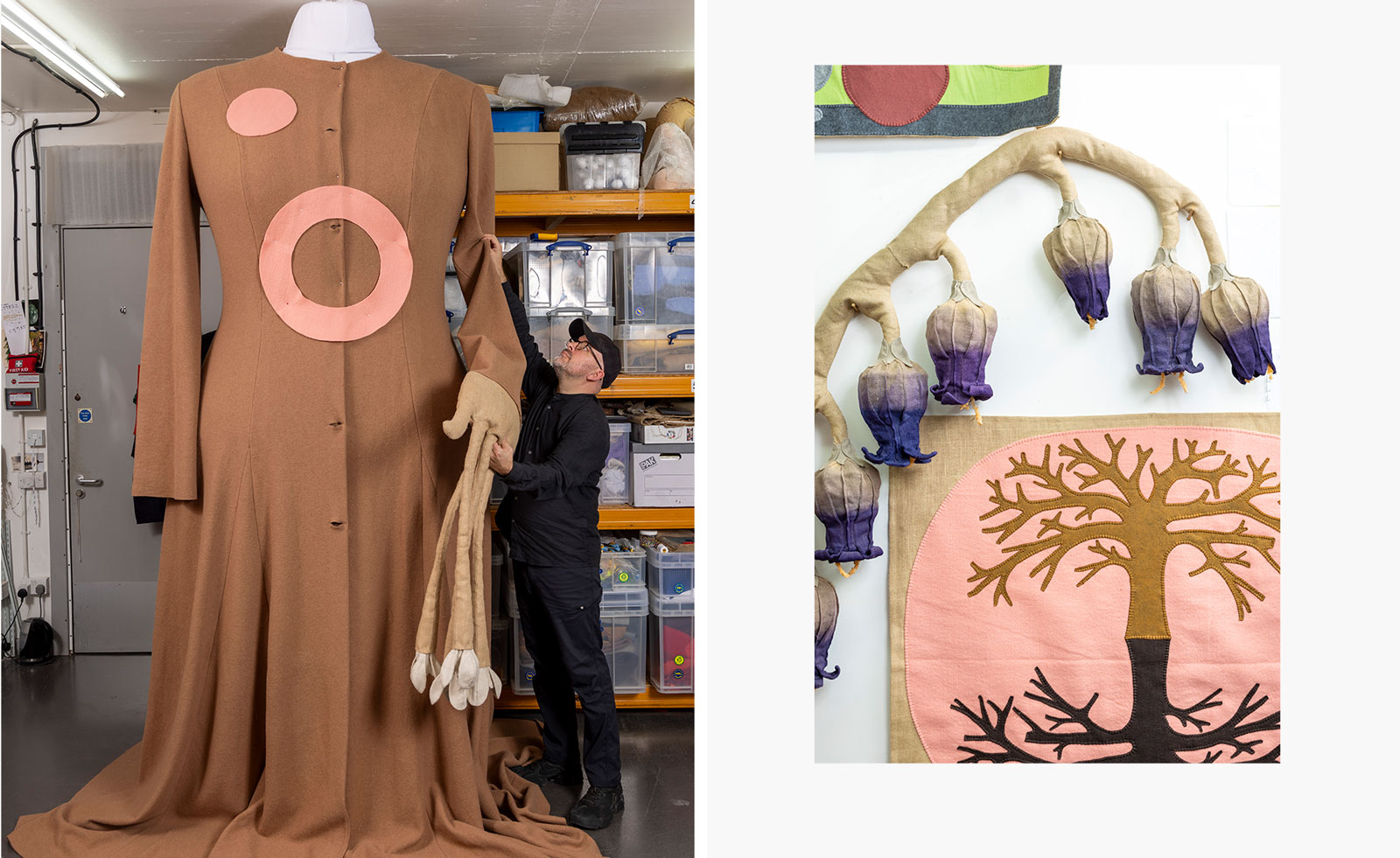 'We need to be constantly reminded of our similarities' – Jonathan Baldock challenges the patriarchal roots of a former Roman temple in London
'We need to be constantly reminded of our similarities' – Jonathan Baldock challenges the patriarchal roots of a former Roman temple in LondonThrough use of ceramics and textiles, British artist Jonathan Baldock creates a magical and immersive exhibition at ‘0.1%’ at London's Mithraum Bloomberg Space
By Emily Steer
-
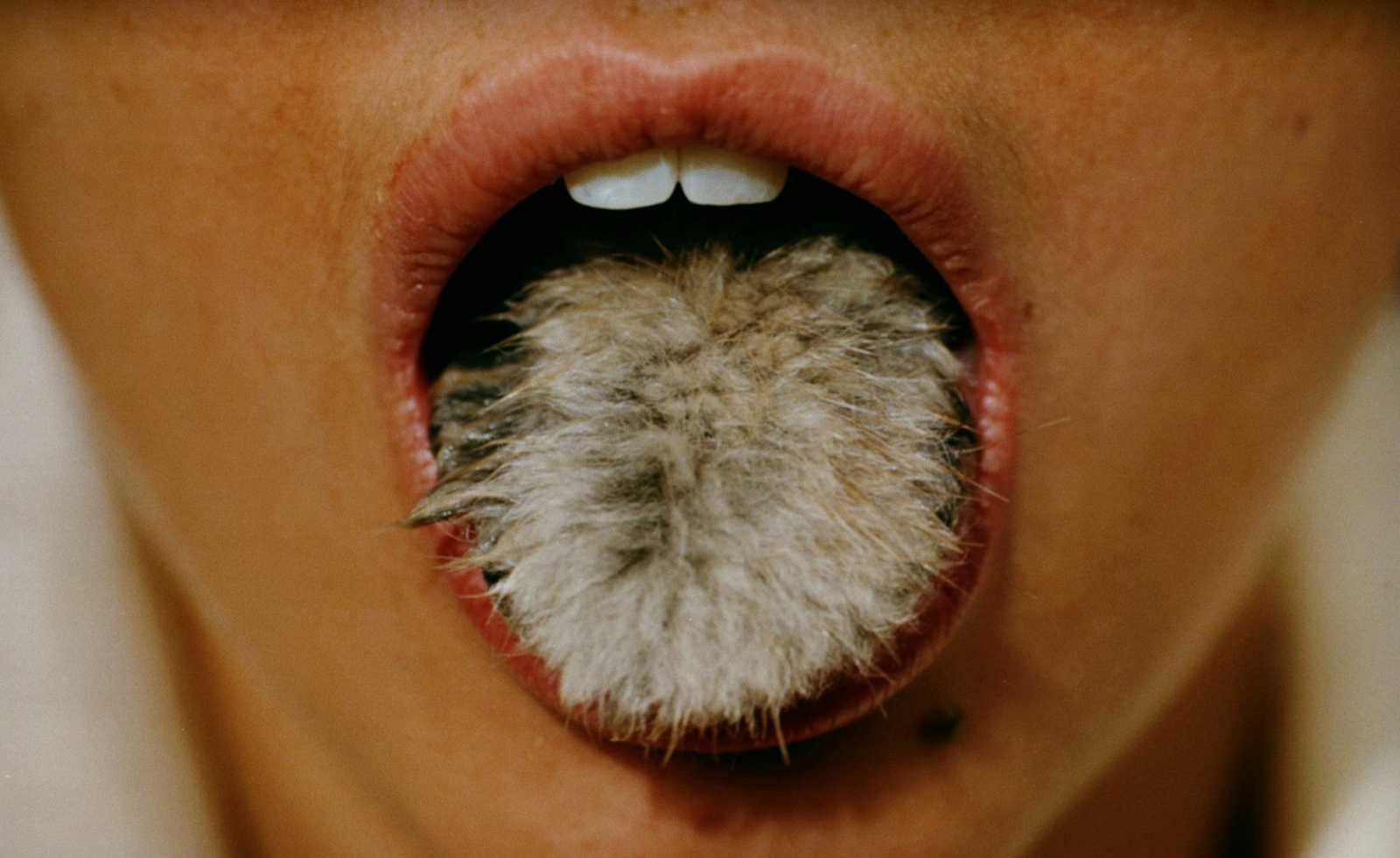 Surrealism as feminist resistance: artists against fascism in Leeds
Surrealism as feminist resistance: artists against fascism in Leeds‘The Traumatic Surreal’ at the Henry Moore Institute, unpacks the generational trauma left by Nazism for postwar women
By Katie Tobin
-
 From activism and capitalism to club culture and subculture, a new exhibition offers a snapshot of 1980s Britain
From activism and capitalism to club culture and subculture, a new exhibition offers a snapshot of 1980s BritainThe turbulence of a colourful decade, as seen through the lens of a diverse community of photographers, collectives and publications, is on show at Tate Britain until May 2025
By Anne Soward
-
 Inside Jack Whitten’s contribution to American contemporary art
Inside Jack Whitten’s contribution to American contemporary artAs Jack Whitten exhibition ‘Speedchaser’ opens at Hauser & Wirth, London, and before a major retrospective at MoMA opens next year, we explore the American artist's impact
By Finn Blythe
-
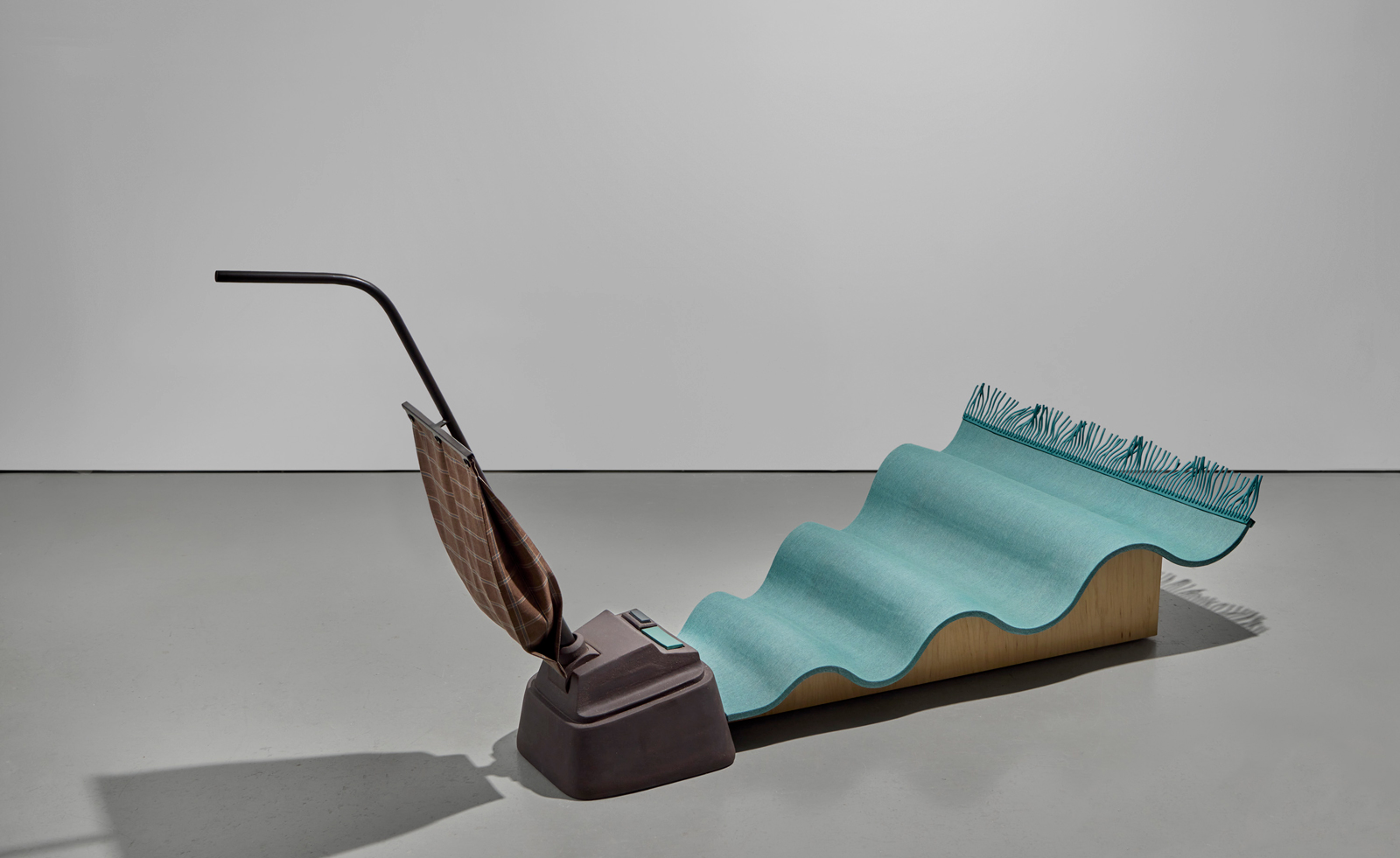 Genesis Belanger is seduced by the real and the fake in London
Genesis Belanger is seduced by the real and the fake in LondonSculptor Genesis Belanger’s solo show, ‘In the Right Conditions We Are Indistinguishable’, is open at Pace, London
By Emily Steer
-
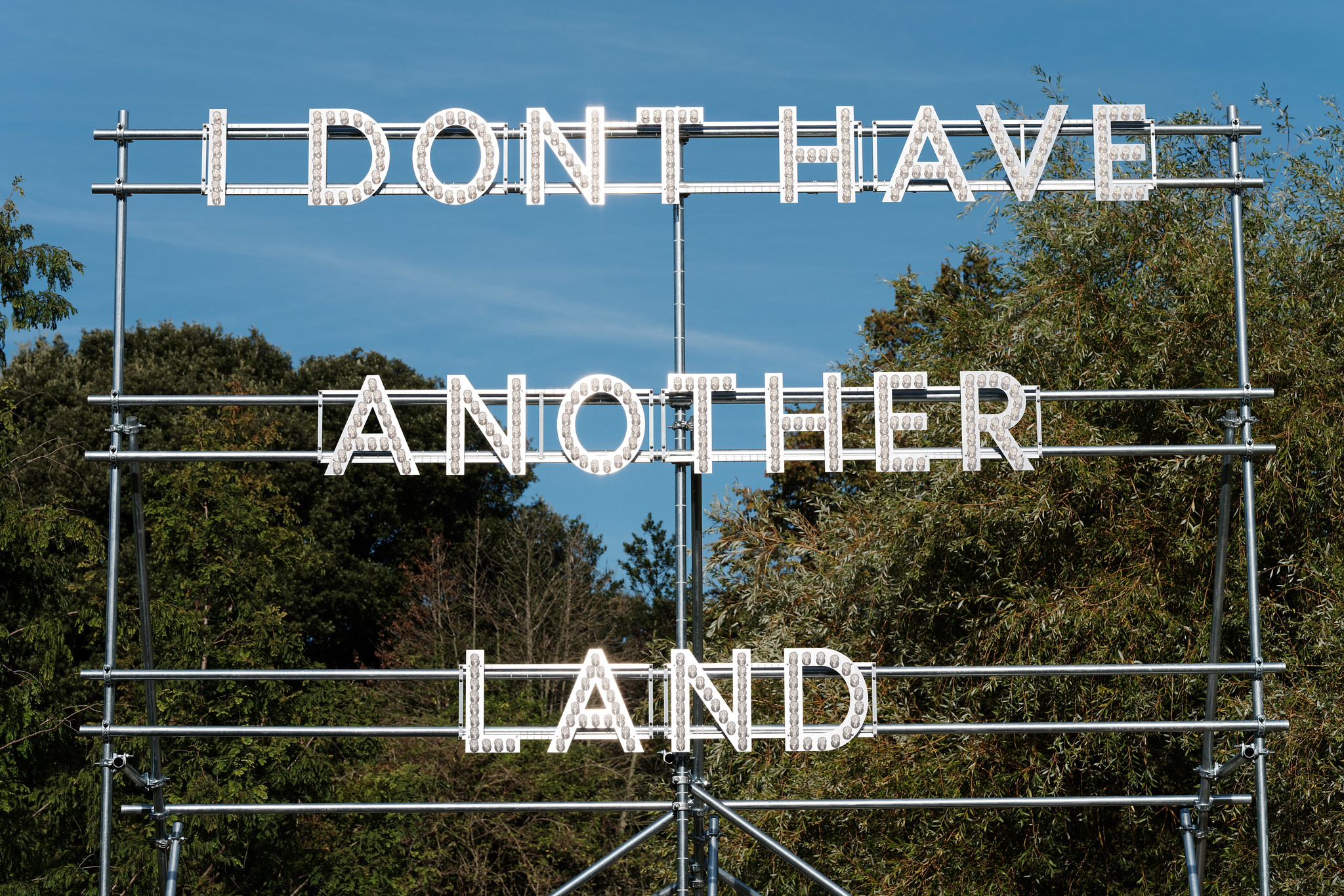 Frieze Sculpture takes over Regent’s Park
Frieze Sculpture takes over Regent’s ParkTwenty-two international artists turn the English gardens into a dream-like landscape and remind us of our inextricable connection to the natural world
By Smilian Cibic